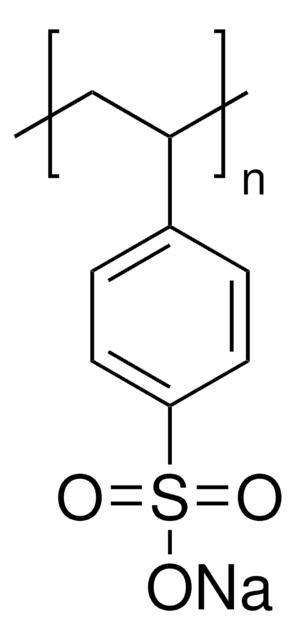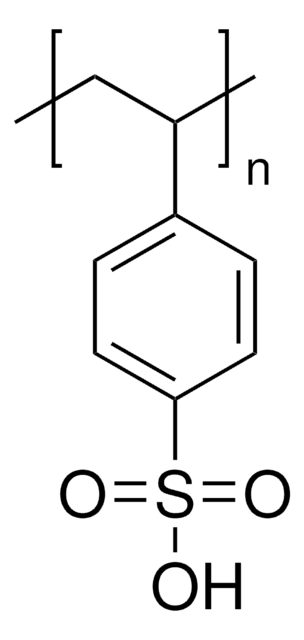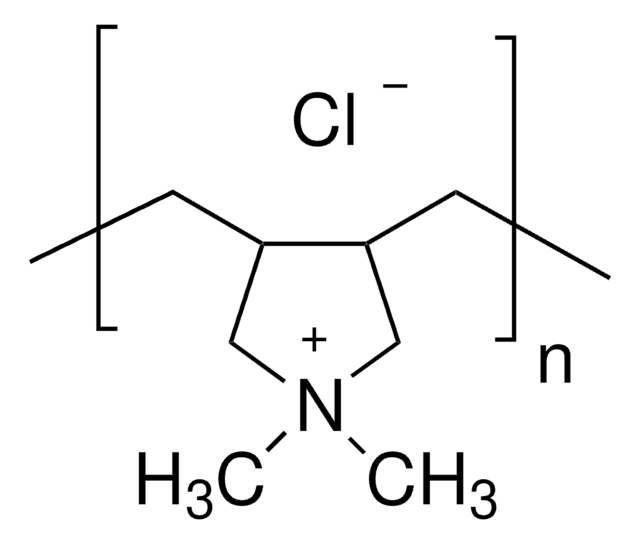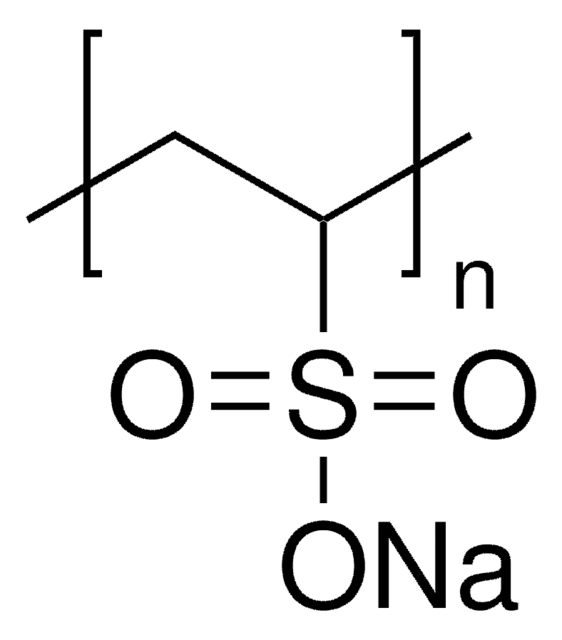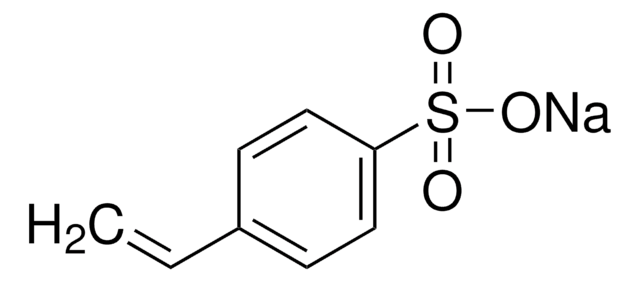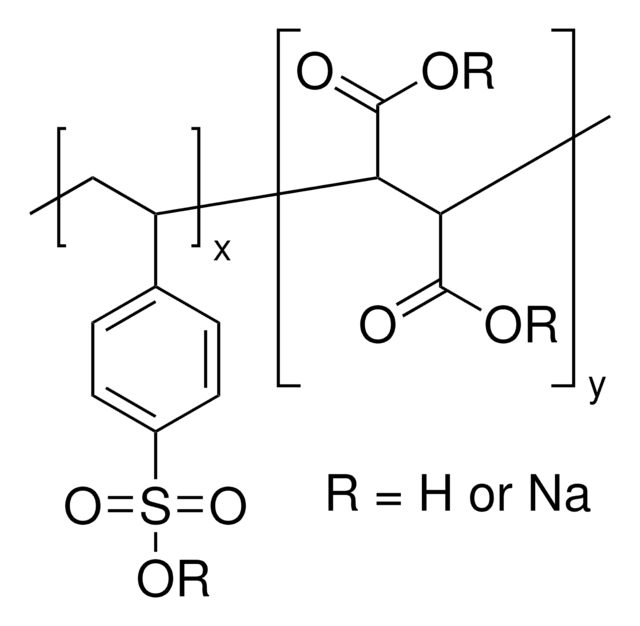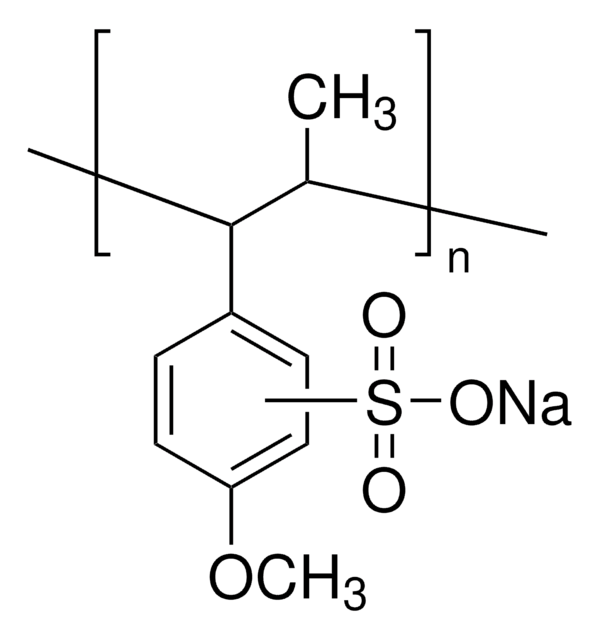561967
Poly(sodium 4-styrenesulfonate) solution
average Mw ~200,000, 30 wt. % in H2O
Synonym(s):
PSS, Poly(4-styrenesulfonic acid) sodium salt
About This Item
Recommended Products
mol wt
average Mw ~200,000
Quality Level
concentration
30 wt. % in H2O
refractive index
n20/D ~1.3961
pH
~6.4
viscosity
~118 cP
density
1.1471 g/mL at 25 °C
InChI
1S/C8H8O3S/c1-2-7-3-5-8(6-4-7)12(9,10)11/h2-6H,1H2,(H,9,10,11)
InChI key
MAGFQRLKWCCTQJ-UHFFFAOYSA-N
Looking for similar products? Visit Product Comparison Guide
Related Categories
General description
Application
- Stabilization of low-cost phase change materials for thermal energy storage applications: This study explores the potential of Poly(sodium 4-styrenesulfonate) in stabilizing low-cost phase change materials, enhancing thermal energy storage capabilities (DO Akamo et al., 2023).
- UPCONVERTING NANOPARTICLES FOR BIOSENSING AND BIOIMAGING: Research on Poly(sodium 4-styrenesulfonate) utilized in biosensing and bioimaging via upconverting nanoparticles, highlighting its applications in high-temperature bioanalytical settings (V ANDRIGO, 2023).
- Chain Dynamics in a Polyelectrolyte Solution Under Shear: A Rheological NMR Investigation: Examines the chain dynamics of Poly(sodium 4-styrenesulfonate) under shear, providing insights into its rheological behavior (S Bartosch et al., 2023).
- Molecular conformation of polyelectrolytes inside Layer-by-Layer assembled films: This research delves into the structural properties of Poly(sodium 4-styrenesulfonate) within multilayered assemblies, contributing to materials science (P Gutfreund et al., 2023).
- Colloidal nanomedicines with prolonged release of chloroquine based on interactions with aromatic polymers after mixing two liquids: from in silico simulation of : Discusses the development of colloidal nanomedicines using Poly(sodium 4-styrenesulfonate), showcasing prolonged drug release capabilities (MG Villamizar-Sarmiento et al., 2024).
Features and Benefits
Storage Class
12 - Non Combustible Liquids
wgk_germany
WGK 2
flash_point_f
Not applicable
flash_point_c
Not applicable
ppe
Eyeshields, Gloves, multi-purpose combination respirator cartridge (US)
Certificates of Analysis (COA)
Search for Certificates of Analysis (COA) by entering the products Lot/Batch Number. Lot and Batch Numbers can be found on a product’s label following the words ‘Lot’ or ‘Batch’.
Already Own This Product?
Find documentation for the products that you have recently purchased in the Document Library.
Customers Also Viewed
Articles
We present an article that discusses two applications in particular; first, using these layers as polyelectrolyte membranes to control permeability.
Our team of scientists has experience in all areas of research including Life Science, Material Science, Chemical Synthesis, Chromatography, Analytical and many others.
Contact Technical Service